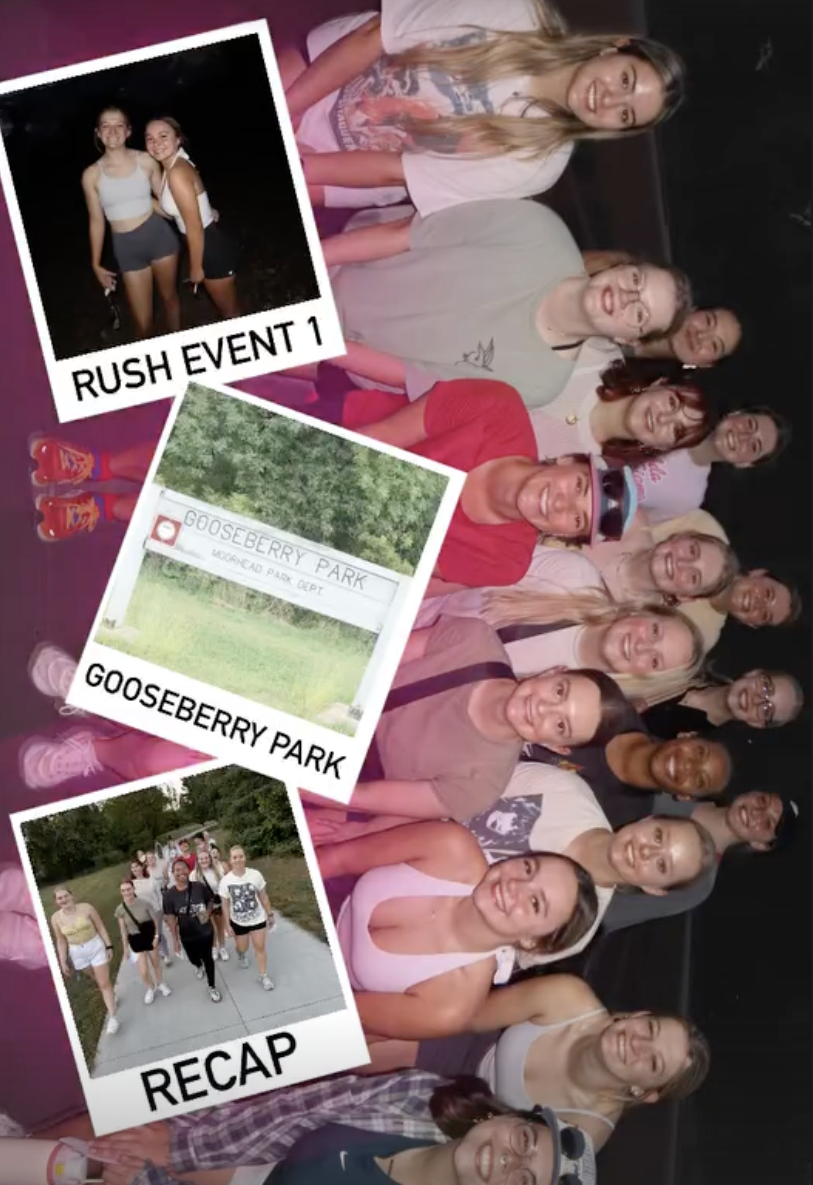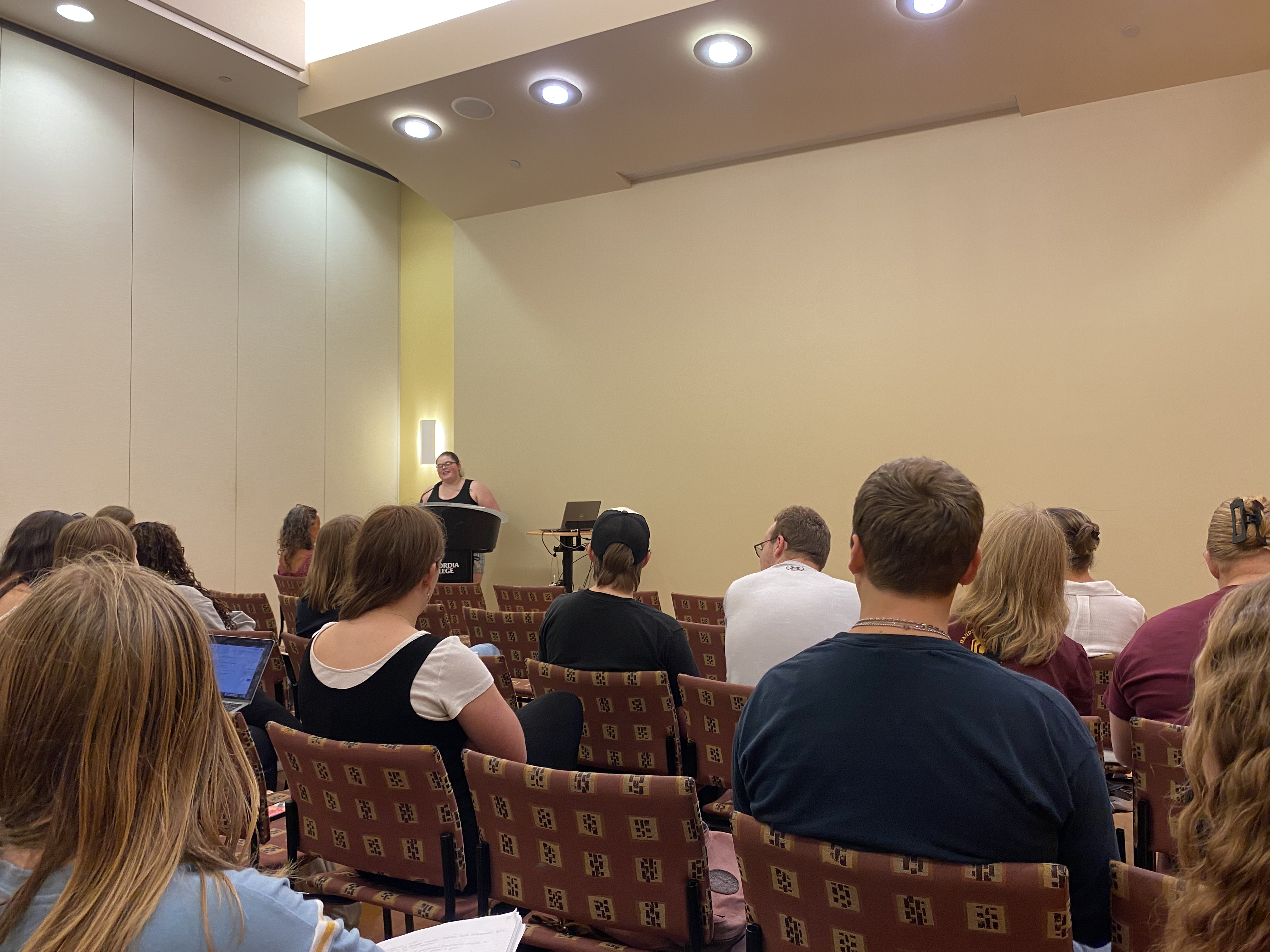On Wednesday evenings, Concordia students and staff may hear the sounds from the Gamelan Group practice coming from the Hvidsten Hall of Music.
Between 8 p.m. and 9:30 p.m. on Wednesday nights, a group of musicians meet in Room 158 to practice gamelan. Professor Jeff Meyer- who teaches global music, film music, worship, and music history courses- has been directing the Concordia Gamelan for about five years.
He stated that a good thing about gamelan was that a large number of performers could be included and that it was interesting because it is different from Western music. He explained that it could push musicians out of their comfort zones by learning different rhythms, tunes, and melodies.
“The best way to learn music, is to make music,” Meyer said.
Gamelan is a type of orchestra indigenous to the islands of Java and Bali, Indonesia. It is characterized by multiple instruments, such as the saron, a metallophone with six or seven bronze keys; the bongang, a collection of pot-shaped gongs; and large suspended gongs called kempuls, according to Britannica. Many instruments are played with mallets known as gamels, a Javanese word for a type of hammer and where gamelan gets its name from.
According to Dr. Meyer, traditional gamelan uses no notation for music; instead, musicians rely on learning and memorizing a piece by hearing it played and practicing on their own.
However, there is a written notation that is occasionally used. Instead of music notes written on a staff, gamelan notation is made up of numbers that denote which part of an instrument should be played. For example, if one was playing a saron and the notation was 5.3, they would play the fifth and third keys.
Carter Egesdal, a trumpet major, explained that he enjoyed attending gamelan because it was different from the music he usually interacted with.
“I like several things about gamelan. I like the sound. I like how different it is to what I usually do… I also like the cultural nature of it… the biggest factor is that it’s fun,” Egesdal said.
Aaron Kess said he believes gamelan is beneficial to his academic career and future employment goals as a music composition major.
“For composition, a big part of that whole process is knowing where there aren’t limits,” Kess said.
Professor Annett Richter- who teaches music history, music iconography, and aural skills at Concordia College- explained that she enjoyed attending gamelan and has done so for years.
“So, I’ve done this before, for the last couple of years. It’s been a wonderful balance of everything else I do. I love that it is a communal form of music making,” Richter said. “Once you get to this level where you cannot just hear your own part and listen to the other parts as you fit into the overall fabric, that’s a gratifying experience for me.”



Be First to Comment